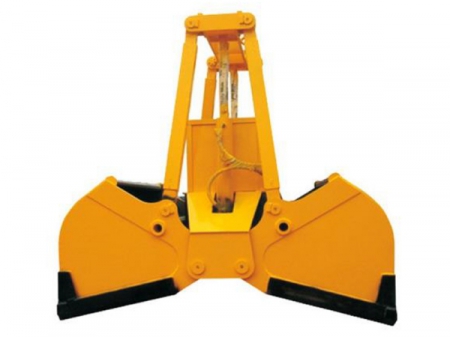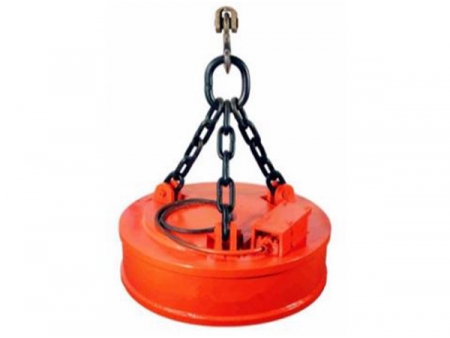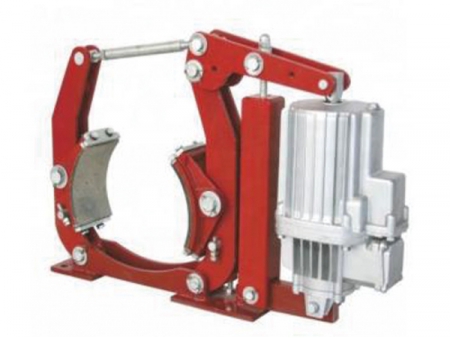Components
Zhonggong supplies a full range of components and parts for crane and hoist, such as crane motor, crane brake, wire rope, crane reducer.
- Grab Bucket
It features large grasping force, which is suitable for loading and unloading of large ore, pig iron block, scrap steel, garbage, iron powder, straw, slag and other materials.
- Crane Electromagnetic Chuck
We offer types of electromagnetic chucks with different sizes to meet various needs of your electromagnetic overhead cranes.
- Vacuum Lifting Machine Suction Cup
Vacuum lifting machine suction cup is suitable for glass, sheet metal, stainless steel, aluminum and non-ferrous materials, which is equipped with a series of vacuum monitoring systems to ensure maximum safety
- Roll Lifting C Hook
Roll lifting C hook is mainly used for the horizontal lifting of the coiled plate. Because its shape resembles the literal C, it is called a roll lifting C hook.
- Crane Hook Block
- End Beam
- Control Pendants
Crane control handles can be a wire pendant, realizing wireless remote control, joystick control, or radio control.
- Crane Cabin
It is a crane operator room with console for crane control.
- Crane Motors
For your different needs, we provide crane motors of various well-known brands.
- Crane Rails
It is a metal groove or ridge that holds, guides, and reduces friction for a moving device and a steel-striped line used for a running trolley.
- Crane Reducer
It is to reduce the high speed of the motor to the working speed required by each mechanism.
- Crane Wheel
Crane wheels are used for sustaining the crane. The wheel and the angle bearing housing are assembled together to form a wheel group.
- Gear Motors
The gear motor is 3-in-1 drive equipment which combines motor, reducer/gear box and brake into one machine.
- Overload Limiter
Simple structure, quick response, safe, reliable, and automatic control.
- Rolling Drum
It is a part of the hoisting mechanism used to wind the steel wire rope.
- Wire Rope Pulley
It is divided into fixed pulley and movable pulley block.
- Wire Rope
It’s constituted by steel wire, rope core and grease, which is used for lifting, towing, straining and load bearing.
The lifting mechanism includes brake, motor, reducer, drum and pulley block. The motor drives the drum to rotate through the reducer, so that the steel wire rope can be wound on or unwound from the drum to lift the weight. Trolley frame is used for supporting and installing hoisting mechanism. Trolley running mechanism and other components are usually of welded structure.
The driving modes of crane operating mechanism can be divided into centralized driving and separate driving. Small and medium-sized bridge cranes mostly adopt the "three in one" driving mode composed of brake, reducer and motor. In order to facilitate installation and adjustment, the driving device of ordinary bridge cranes with large lifting capacity often adopts universal coupling.
The bridge is composed of main beam and end beam, which is divided into single main beam bridge and double beam bridge. The main beam is rigidly connected with the end beam, and wheels are installed at both ends of the end beam to support the bridge to run on the elevated rail. A track is welded on the main beam for the operation of the lifting trolley.
Hook
- Check whether the marking and anti-falling off device of the hook meet the requirements, and whether the hook has cracks, peeling and other defects;
- Whether the wear of hook section, the increase of opening degree and torsional deformation exceed the standard;
- Whether the neck and surface of the hook have fatigue deformation, crack and wear of relevant pin shaft and sleeve.
Wire Rope
- It is necessary to check whether the specification and model of steel wire rope match the pulley drum and meet the design requirements.
- Whether the pressing plate, rope clamp, wedge and other wire rope fixing devices at the fixed end of the wire rope meet the requirements.
- Whether the wear, broken wire, kink, flattening, bending, broken strand and corrosion of steel wire rope exceed the standard.
Braking Device
- The brake pad shall be free of burning and burnt smell, and the friction surface of the brake wheel shall be free of oil stain.
Reel
- Whether there are fatigue cracks and damages on the drum body and drum edge;
- Whether the wear of rope groove and barrel wall exceeds the standard;
- Whether the height of the drum rim matches the number of winding layers of the steel wire rope;
- Whether the working conditions of rope guide and rope guide meet the requirements;
Pulley
- Whether the pulley is equipped with anti-rope falling off groove device;
- Whether there are cracks, broken edges and excessive wear on the pulley rope groove and rim, and whether the pulley rotates flexibly.
Reducer
- Whether there are abnormal sounds such as violent metal friction sound, vibration and shell radiation during reducer operation;
- Whether the shaft end is sealed well, whether the fixing bolt is loose or damaged;
- Whether the selection of reducer lubricating oil, oil level, operation of vertical reducer lubricating oil pump and open gear transmission lubrication meet the requirements.
Wheels
- Whether the wheel tread and axle have fatigue cracks, and whether the wheel tread and axle wear exceed the standard.
- Whether rail gnawing occurs during operation.
- What is the cause of rail gnawing.




